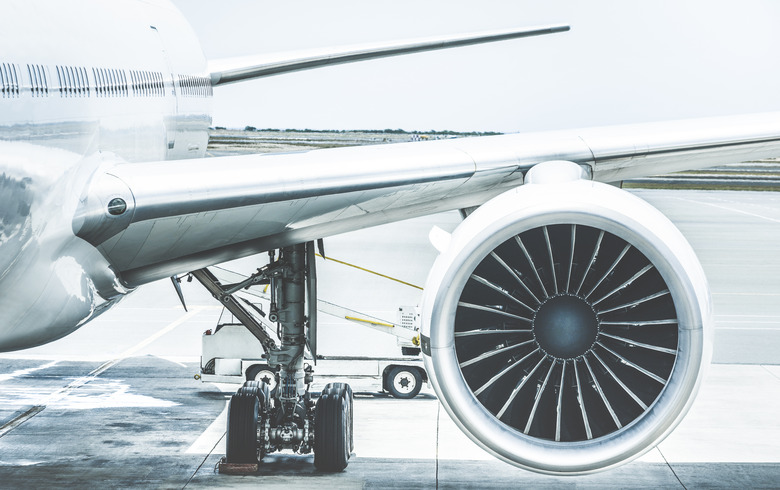What Is The Decibel Level Of A Jet Plane?
Whether they are listening to music, talking with friends, or just enjoying the sounds of nature, most people rely on their hearing to experience the world around them. Understanding how hearing works and the way scientists measure sound is important for protecting this valuable asset.
TL;DR (Too Long; Didn't Read)
The sounds associated with jet planes measure between 120 and 140 decibels. Any sound above 85 decibels has the potential to cause hearing damage, especially with frequent or prolonged exposure. Wearing ear protection and limiting exposure to loud sounds is the best way to protect against noise-induced hearing loss.
How Hearing Works
How Hearing Works
When you hear a sound, the process feels instantaneous. However, the things that happen between hearing and recognizing a sound are complex. Your outer ear acts as a funnel, capturing sound waves and directing them down the ear canal. These sound waves cause the eardrum seated deep in the ear canal to vibrate. The vibrations of the eardrum move the three bones in the middle ear, amplifying the vibration and kicking it into the inner ear.
The inner ear, or cochlea, contains fluid and a lining of tiny hair cells. As the vibrations move through the cochlea, the fluid also moves and engages the hair cells, which convert the vibrations to electrical signals. These signals travel to the brain via the hearing nerve, allowing you to recognize the sound you hear.
Jet Engines Quantified
Jet Engines Quantified
Sounds vary a great deal. Scientists use decibels to measure the loudness of a sound. The weakest sound you can hear measures zero decibels, while the loudest sound clocks in at a staggering 194 decibels. When it comes to quantifying the noise level associated with jet engines, experts offer a range: 120 to 140 decibels. For comparison, both normal conversation and playing a piano produce 60- to 70-decibel sounds, while amplified music at a concert can exceed 120 decibels.
Noise-Induced Hearing Loss
Noise-Induced Hearing Loss
Loud sounds produce larger sound waves and bigger vibrations, which can damage the hair cells in the cochlea. This damage usually accumulates slowly and painlessly, so you might not notice it happening. However, noise-induced hearing loss is permanent. Any noise above 85 decibels has the potential to cause hearing damage, especially if the noise exposure is prolonged or frequent. At 85 decibels, damage occurs after eight hours of exposure, while a mere two hours at 91 decibels results in damage. Sound only becomes physically painful at about 125 decibels, so it is possible to exceed the 85-decibel threshold without realizing it.
It is a good idea to wear hearing protection such as earplugs or earmuffs (or both) if you expect prolonged or frequent exposure to sound above the noise exposure limit and to avoid excessively loud sounds if you can. Understanding how hearing works and the way scientists measure sound is a great first step toward protecting your complicated and delicate sense of hearing.
Cite This Article
MLA
Mayer, Melissa. "What Is The Decibel Level Of A Jet Plane?" sciencing.com, https://www.sciencing.com/decibel-level-jet-plane-5375252/. 9 May 2018.
APA
Mayer, Melissa. (2018, May 9). What Is The Decibel Level Of A Jet Plane?. sciencing.com. Retrieved from https://www.sciencing.com/decibel-level-jet-plane-5375252/
Chicago
Mayer, Melissa. What Is The Decibel Level Of A Jet Plane? last modified March 24, 2022. https://www.sciencing.com/decibel-level-jet-plane-5375252/
